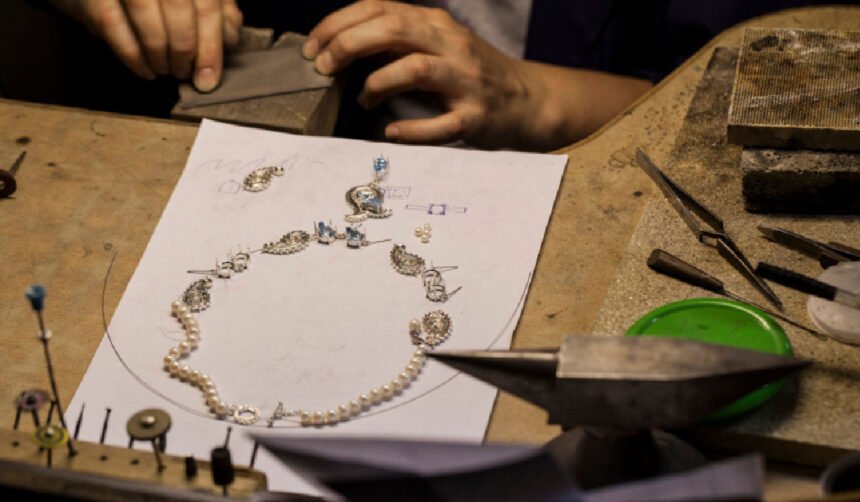Designing custom jewelry is a unique and personal journey that blends creativity, craftsmanship, and collaboration. It’s not just about making something beautiful; it’s about creating a piece that tells a story and reflects the individual’s personality, taste, and style. Let’s go through the entire process, from the initial consultation to the final creation, to give you a deeper understanding of what goes into crafting one-of-a-kind jewelry pieces for your customers.
Initial Consultation with the Client
The first step in any custom jewelry design process is the consultation. This is where you get to know your client, their vision, and their needs. You’ll want to ask questions that help you understand their style, the purpose of the piece (whether it’s for a wedding, anniversary, or just because), and any specific materials or features they have in mind. It’s also important to establish a budget upfront, so you can recommend materials and design options that are realistic. Building trust during this phase is essential—make sure your client feels comfortable sharing their ideas and preferences with you. The more information you gather, the better equipped you’ll be to create a design that resonates with them.
Inspiration & Concept Development
Once you have a clear idea of your client’s preferences, it’s time to dive into inspiration and concept development. You might gather inspiration from a variety of sources—nature, art, fashion, or even the client’s personal story. Sketching ideas is a great way to visualize initial concepts, and you may even consider creating mood boards or digital mockups to better communicate the look and feel of the design. At this stage, it’s essential to balance the customer’s desires with your expertise in design, ensuring the final concept is not only aesthetically pleasing but also practical. Refining the idea into a clear and cohesive design will set the foundation for the next steps in the process.
Sourcing Materials
Choosing the right materials is crucial to the success of your design. In this step, you’ll need to source the metals, gemstones, and any other components that will bring your vision to life. Check out Bluestreak Crystals for your materials. Ethical sourcing is becoming increasingly important, and many customers now prefer sustainable or responsibly sourced materials. This is a great opportunity to educate your client about the materials you’re using, whether it’s conflict-free diamonds, recycled metals, or ethically sourced gemstones. It’s essential to balance the quality of the materials with the client’s budget, ensuring that you’re using the best possible materials without compromising the overall cost.
Designing the Jewelry Piece
Now that you have a solid concept, it’s time to translate those ideas into a full design. This phase involves creating detailed sketches, CAD (computer-aided design) models, or prototypes to give a more realistic view of how the finished piece will look. During this process, you’ll need to carefully choose the materials—metals, gemstones, and other elements that align with the design and the client’s wishes. The design should also take into account technical factors such as durability, comfort, and functionality. For example, if you’re designing a ring, you’ll want to consider how the band feels on the finger or how the stone sits in its setting. Prototypes or 3D models can also be helpful to test proportions and adjust any design flaws before moving on to crafting.
Crafting the Jewelry
The crafting phase is where the magic happens. This is when your design turns into a tangible piece of jewelry. The process can involve a variety of techniques, from traditional methods like casting and stone setting to more modern ones like 3D printing. If you’re working with a team of skilled artisans or jewelers, they’ll take the design and start bringing it to life, paying attention to every detail. From soldering the metal to setting the gemstones and polishing the final piece, each step requires precision and care. During this phase, you may need to make some adjustments or refinements, ensuring that the piece meets both your expectations and the client’s.
What are the Differences Between Gold and Sterling Silver?
Are you looking at jewelry and can’t decide whether you want to get gold or Sterling silver? They’re both very popular materials, and they have their own unique advantages. Of course, when you’re designing pieces, you always have to have your customers in mind. Learning about the materials can mean matching this to your customer’s needs. So, let’s learn the main differences between gold and Sterling silver.
Gold
When it comes to a material, gold is the most popular. People love the deep gold color it has and how luxurious it is. Indeed, it has a color that doesn’t change over time. Despite the occasional polishing, it’s a material that looks good for many years when it’s taken care of. When it comes to durability, it can get scratched due to being a sofa material. So, you need to consider how customers will treat their jewelry. If you choose this material for your designs, it’s going to be costly, but it can appeal to many.
Sterling Silver
Some people love the white metallic sheen of Sterling Silver. Indeed, this is an attractive material and one that can add shine to your outfit. Typically, it’s going to be stronger than gold, and it can have a lower price tag. So, it can be better for everyday use since it’s not as easily scratched. However, this is a material that can tarnish over time. This is particularly true when it’s exposed to moisture.
Conclusion
Creating custom jewelry is a process that requires a blend of creativity, technical skill, and a deep understanding of your client’s desires. From the initial consultation to the final delivery, each step is an opportunity to showcase your expertise and build a meaningful relationship with your customers. By following a thoughtful design process and focusing on quality, you can create unique, personal pieces that will be cherished for years to come. Ready to create your next custom piece? Let’s start the journey together!
READ ALSO: Last-Minute Gifts You Can Find in Stores Today to Skip the Holiday Rush








